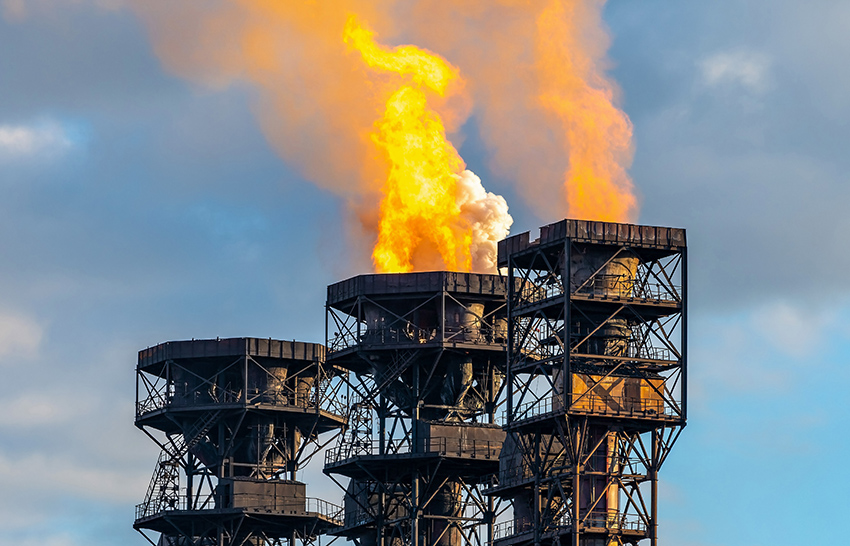By Jeremy M. Martin And Paul Youngblood
Copyright mexiconewsdaily

Long one of the world’s leading oil producers, Mexico is also among the top nine countries that together account for 75% of global methane emissions from gas flaring and venting. It is a dubious ranking that has not gone unnoticed. Indeed, for years Mexico has signaled its intent to reduce methane emissions. There are obvious climate and emission reduction goals but also important energy security aspects that are increasingly relevant.
Cutting flaring — the practice of burning off unwanted natural gas at oil and gas sites, converting methane that would otherwise escape into the atmosphere into carbon dioxide — through better maintenance and gas capture technology is widely seen as low-hanging fruit. In 2016, the country endorsed the World Bank’s Zero Routine Flaring by 2030 initiative and reaffirmed that pledge in 2025. Then in 2018, the Peña Nieto administration enacted one of the world’s most ambitious methane regulations in the oil and gas sector. It mandated leak detection and repair, vapor recovery systems, low-bleed technologies and reduced-emission completions, aiming to cut sector methane emissions by around 75% by 2025. In its 2022 Nationally Determined Contribution (NDC) to the United Nations, Mexico committed to lowering its total greenhouse gas emissions by 35% by 2030, including a goal to utilize 98% of methane from oil and gas operations. That’s the good news.
Despite these stated ambitions, Mexico and its state oil company, Pemex, are not effecting positive change. In 2024, the country flared 5.7 billion cubic meters (bcm) of natural gas, up from 5.5 bcm in 2023. Even more troubling, flaring intensity rose from 7.8 cubic meters per barrel in 2023 to 8.5 cubic meters per barrel in 2024. Aging infrastructure and maturing oil wells make gas management more difficult, but there are also signs of simple neglect — and non-compliance with the nation’s own goals and objectives. A 2024 Reuters report revealed that Pemex deliberately delayed repairs on failing equipment at its Zaap-C platform in the Gulf of Mexico, allowing methane to vent into the atmosphere for months. (Venting refers to releasing natural gas directly without combustion.)
This more recent backsliding occurred during the final years of President Andrés Manuel López Obrador’s administration, which ended in October 2024. His successor, Claudia Sheinbaum, has presented herself as more climate-focused and has signaled that Pemex will end costly flaring practices.
Energy security in the Trump era
There is a very compelling geopolitical argument and context. Today Mexico imports about 70% of its natural gas, almost entirely from the United States. That dependence looks manageable when markets are calm and Washington is cooperative, but it becomes a glaring vulnerability in the face of potential political and environmental shocks. During the 2021 Texas freeze, disruptions in natural gas supply left almost 5 million households and businesses in northern Mexico without power. The second iteration of a Trump administration has been nothing but volatile to nearshore relationships, using tariffs to bully partners to the negotiation table. Similarly, renegotiations of the USMCA review are scheduled for 2026, posing a credible risk that Trump will use those to further leverage America’s resources.
Mexico cannot end its dependence on U.S. gas overnight, but capturing and utilizing what is now flared and vented would make the country more resilient to unforeseen shocks. Every molecule of methane redirected from a flare stack into a pipeline is a molecule that does not have to be bargained for across the border. It is a buffer against weather emergencies, pipeline politics and the whims of U.S. electoral cycles.
For a country with a state-owned oil company and an environmentalist president who has promised to reclaim climate leadership, this is an obvious step toward a more sovereign and secure energy sector. Mexico cannot eliminate its reliance on U.S. gas overnight, but by turning its flaring and venting waste into a usable resource it can greatly reduce exposure to external shocks while creating tangible domestic benefits.
What natural gas capture could look like
For Mexico, the path forward to positively impacting and significantly reducing flaring and venting is not a mystery. The International Energy Agency estimates that about 40% of methane emissions from oil and gas operations worldwide could be cut at no net cost, since the value of the captured gas exceeds the expense of the equipment needed. The economics are positive and point to many projects with the potential for quickly amortizing investments, especially with support from climate finance or green bond funding.
In practice, modular compressors and flare gas recovery systems, already deployed in dozens of producing countries, could turn wasted natural gas into revenue. Pemex itself projects that reaching zero routine flaring by 2030 will require over US $2 billion in capital outlays. Alone, it’s a significant figure, but much smaller next to its annual budget and what Mexico spends each year on imported U.S. gas.
The potential resource gain from capturing natural gas from wasteful systems is not trivial. Mexico’s 5.7 bcm of flared natural gas in 2024, if captured and treated, could have displaced roughly 8.5% of the 66.7 bcm in pipeline imports Mexico bought from the United States. What is now flared and vented could supply enough fuel to power millions of Mexican homes or to stabilize electricity supply in southeastern industrial regions, where shortages have been chronic.
Energy security meets economic security
The benefits of curtailing flaring and venting extend beyond the balance sheet. Mexico has the chance to slash its greenhouse gas footprint, help Pemex meet its climate commitments as part of its sustainability plan, and improve the company’s credibility with lenders who are increasingly reluctant to finance fossil fuel firms. It would also create jobs in the service sector for installing and operating the needed infrastructure.
And that is before accounting for the costs being assumed by Mexican society. Climate-driven disasters such as hurricanes, heatwaves and droughts are already wreaking havoc across the region. At the local level, flaring in southeast Mexico has also been linked to a range of adverse health outcomes, imposing incalculable losses in healthcare spending and quality of life for communities living in extraction zones.
With much uncertainty on the horizon, even a modest 8.5% gain in natural gas self-sufficiency could prove decisive. It could also serve as great domestic politics for the Sheinbaum administration, marrying her desire to be seen as more ambitious on climate action as well as economic security in the face of the non-stop challenges emanating from the U.S. administration in Washington.
Jeremy M. Martin is Vice President for Energy and Sustainability at the Institute of the Americas, an inter-American public policy think-tank located at the UC San Diego.
Paul Youngblood is a researcher with the Institute of the Americas’ Energy & Sustainability program and a graduate student at UC San Diego’s School of Global Policy and Strategy.



